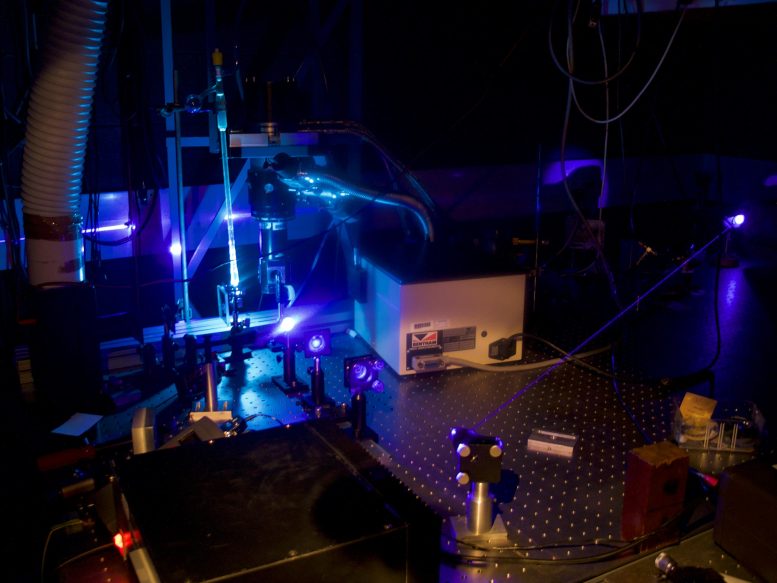
Durham University scientists have discovered a new method to improve blue OLEDs, introducing hyperfluorescent technology that triples efficiency and offers more stable light emission. This advancement could lead to displays that are not only brighter and more durable but also significantly more energy-efficient. Credit: SciTechDaily.com
A groundbreaking study has unlocked a novel approach for enhancing blue OLEDs, leading to displays that are brighter, more efficient, and longer-lasting, while consuming up to 30% less energy.
New research from scientists at Durham University reveals an unexpected pathway towards brighter, more efficient, and more stable blue organic light-emitting diodes (OLEDs).
The findings, published in the journal
OLED displays, used in most modern smartphones and TVs, rely on light emission from specialized organic molecules.
Key Challenges and Innovations in OLED Technology
Despite the widespread use of OLED displays, achieving stable and efficient blue light emission remains a key challenge.
Now, Durham University researchers have unlocked a new design strategy using “hyperfluorescent” OLEDs, where energy is transferred from a ‘sensitizer’ molecule to a separate ‘emitter’ molecule.

Credit: Durham University
Surprisingly, the team found that sensitizer molecules previously dismissed as poor emitters actually perform remarkably well in hyperfluorescent OLEDs.
“We discovered a ‘blind spot’ where materials overlooked by conventional thinking can become highly effective when used as sensitizers in hyperfluorescence OLEDs,” said Kleitos Stavrou of Durham University, lead author of the study.
Molecular Design Breakthroughs
In particular, the molecule ACRSA was found to triple the OLED efficiency when used as a sensitizer in hyperfluorescence OLEDs.
The researchers attribute this to ACRSA’s rigid molecular structure and long-lived excited states.
Even more strikingly, using a greenish sensitizer, such as ACRSA, deep blue light emission can be achieved by transferring ACRSA’s energy to a blue terminal emitter.
“This approach reduces exciton energy compared to direct blue emission in devices, allowing more stable, longer-lasting blue OLEDs,” said senior author of the study, Professor Andrew Monkman of Durham University’s Physics Department.
Implications for Future Display Technologies
Overall, the strategy provides a new molecular design paradigm for stable and highly efficient displays.
“Our findings reveal an unexplored territory for hyperfluorescent OLEDs that could greatly expand material choices for the next generation of displays, which will also use up to 30% less electricity” said Professor Monkman.
The researchers next plan to further develop hyperfluorescent OLEDs, with industrial partners, for commercial applications.
Reference: 13 February 2024, Nature Photonics.DOI: 10.1038/s41566-024-01395-1